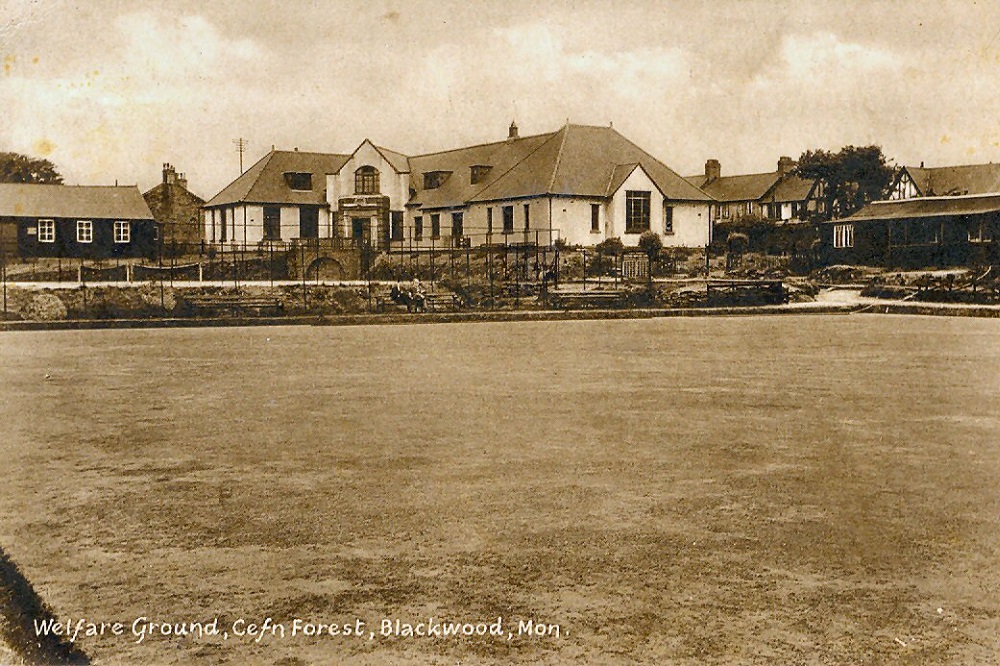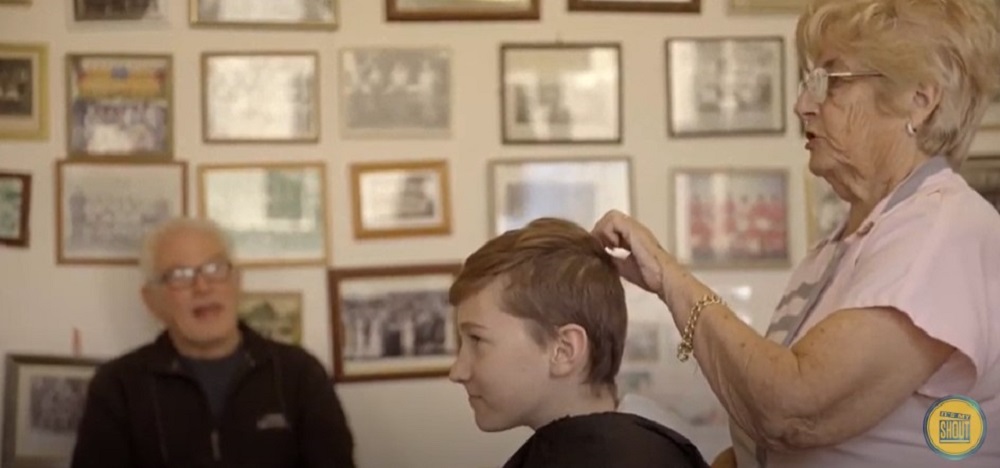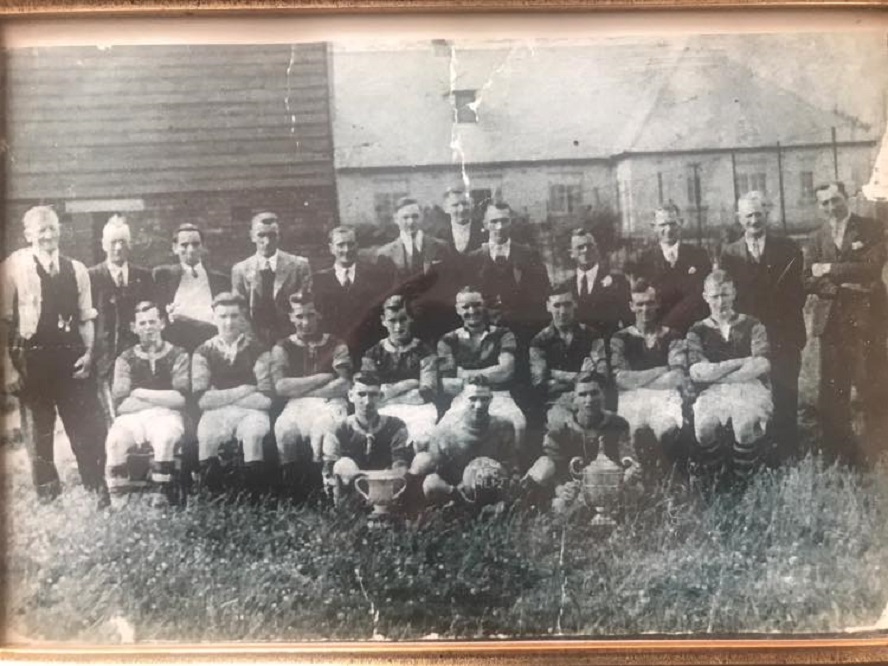Save our ‘stute – the remarkable community venture to rebuild the past for the future

Sarah Morgan Jones
Sometimes a community is far bigger than the sum of its parts, never more so than when those parts come together to connect the past to the future.
Such is the case in Cefn Fforest, a former mining community on the outskirts of Blackwood, listed as the smallest community in Wales, but certainly unafraid to punch above its weight when it comes to direct action and getting things done.
As well as being the home of retired Welsh former professional boxing world champion, Nathan Cleverley, the community also became known for producing the racing thoroughbred Dream Alliance.
The allotment-reared horse who was owned locally by syndicate, became the subject of both a feature film and a documentary, running 30 races before retiring in 2015 and he only died in April this year at the age of 22.
In recent years another remarkable community endeavour has begun and is gaining momentum, this time set in motion by the making of a short film, directed by poet and film maker, Clare Potter, about a small corner of social history.
The Cefn Fforest Miners’ Institute had fallen into disrepair and dangerous disuse since changing hands over its 80 plus years, and at the time Clare’s film for the BBC ‘It’s My Shout’ series was being made back in 2018, looked likely to go the way of many of its kind and be bulldozed and replaced by flats.
But when, during the filming of The Wall and the Mirror, about an iconic barber’s shop in the community, the cameras turned, almost by chance, on the crumbling building, the community spotted a new mission: to set about saving it and returning it to community use.
Custodian
At the heart of any community is the keeper of the memories. The person or the place that collects swatches of memory fabric from individuals and quietly stitches them into a quilt becomes that custodian.
As more and more people see their memories in that quilt, how they relate to each other becomes stronger and clearer and over time the memories become the future.
In Cefn Fforest, that keeper of memories was one Shirley Walker, a barber who took up the scissors and the shears from her father before her and made generations of men and boys look tidy around the ears for over six decades.
As they sat in her barber’s chair for their weekly short back and sides, before heading up to the Miners’ Institute for a well-deserved Friday evening pint, they found in her a counsellor and confessor, confidante and an unknowing quilt maker.
All along the wall of her shop, visible from her hairdressing mirror, are framed photographs of miners, sports teams, and men of the parish, past and present, who have sat in her chair for a trim.

The mirror
In The Wall and the Mirror, as regulars from the barber’s chair ponder the importance of Shirley’s, one man says: “When you think of it, that wall of photographs is like a mirror, it reflects who we were. And the mirror our fathers looked into, reflects who we are.”
Made freely available by the BBC as the early days of the pandemic lockdown crept across the land, the documentary captures the very essence of this cultural ‘quilt making’, social history not stuck in a museum, removed from its subjects, but in a shop front accessible to all.
In the film, Shirley says: “I never wanted to cut hair, I always wanted to be a nurse. My father was the Cefn Fforest hairdresser, and he had no sons, so I had to take over after him…
“Half the men, if they went somewhere else, they wouldn’t know what to ask for. They don’t have to tell me how they want their hair, because I know what they like. I could cut their hair with my eyes shut.”
Shirley says they come from everywhere – there’s a former rugby player who lives in America who always stops by for a trim when in Wales – and some people come into the shop just to look at the photos, picking out people from their past.
One man says “I come all the way from Lydstep for my haircut. A 200-mile round trip.”
Another chuckles and says: “I come from Abergavenny for mine…because I fancy Shirl.”
Continuity of touch
Former miner, Ron Stoate says he sees someone new every time, as he poignantly picks out face after face of men who have since died.
Another retired miner, Nat Thomas, explains how deep the bond runs, family connections between Shirley and the men who visit, describing them like strands running through the village.
“Shirley would give them their first haircut, and then, later on, without them knowing, their last.”
“When you think about it there’s a continuity of touch between those miners and us, through the Black Path and to Shirley’s, get their short back and sides then up the club for a night out.”

Respect
In amongst the photos are cricket teams, rugby teams, even the pigeon fanciers preparing for their race to St Malo, but the focus narrows down to the men gathered on the steps of the old institute, and Ron Stoate remembers them when he was young, as men who were treated with the utmost respect.
Built in the 1930s the ‘stute has long supported the local community, housing a reading room, meeting rooms and snooker halls in its original incarnation before becoming a rugby club and boxing club.
At one time it was a focal point of the village, where everyone went for social occasions, where there were beautiful gardens, and the reading room with the newspapers on stands, where men gathered and met. The building and the contents and the men were held in high esteem.
It was on a day when the filming schedule unexpectedly went awry that Clare and two of Shirley’s customers – ex miners Ray Pope and Nat Thomas – took a visit to the old building and the seed of a dream to save the ‘Stute was planted.
Nat reflects on the sorry state of the ‘stute during the emotional visit: “If the old miners could come back, they’d be absolutely shocked, they’d be devastated. Cos their men were the backbone of the industry, and they were the men that inspired us youngsters.”
Clare and Nat began cooking up the plan to save the building and helped establish the Friends of the Cefn Forest Miners Institute and the ‘Save Our Stute’ Facebook page for fundraising.
Beautiful building
Nat’s son Ian takes up the story, telling me that right up until his father’s death last year, he was out and about in the community drumming up enthusiasm and support for the project, coaxing volunteers and calling on those who could, to come and do something.
Ian remembered it as a beautiful building when he visited as a child with his dad, who worked at the Britannia Colliery and had been a youth delegate at the lodge in the late 50s and early 60s.
He said that newspaper articles show that in its heyday, the building hosted thousands of events a year, and it’s the memory of that and his father’s determination to reclaim it that now drives him and his fellow volunteers on.
After a long journey to take over ownership of the building and beginning a fundraising process, a committee of dedicated locals and volunteers from further afield are now in full swing restoring the fabric of the place that has seen so many threads of the village pass through its doors.
With some generous funding support from the Coal Field Regeneration Trust and a donation towards the windows from Caerphilly Borough Council, work at the institute was given a significant boost.
Added to this, regular ongoing fundraising drives such as raffles are feeding into the coffers and the Friends of Cefn Fforest Miners Institute have established charitable status in order to drum up and maintain support. (Video credit: Rhys Hurley)
Bardic chair
Ian and the other volunteers go in two or three times a week and have made great progress.
It took months to clear out the building initially, and sort out what could be saved and restored, and what had to go.
At some point along the way, Ian tells me, a bardic chair which was gathering dust in the attic went missing, and the team are hoping that at some point it will ‘find its way back’.
Future generations
So far, they have managed to do a lot of the work themselves, and even engaged local school groups in helping out on special project days, with the aim of connecting the past with the future generations, giving them a stake in the building so they are inspired to carry on taking care of it.
They are now getting quotes for the work requiring more skills, but as they wrangle with funding, the costs post-Brexit and post-pandemic have spiralled and the challenges are unrelenting.
The hope is that they can restore the main hall first and then use rental from that to fund the restoration of the other rooms, and that eventually the building will have office tenants as well as regular events and activities so that it can sustain itself.
In memory of Nat Thomas who would have celebrated his 83rd birthday this week, the Friends have established the ‘100 Club’ to try and help boost the coffers.
In a Facebook post, Ian explains: “We have just launched our campaign to see if 100 friends may be in position to donate a fiver £5 a month to the charity to put us on a firm footing to continue to move forward.
“We have about 10 generous friends on board as a start, as Nat our co founder would have been 83 today we are using his birthday as our launch.”
A slice of history
Ian tells me: “It’s about the history for me, a slice of history we don’t want to lose.”
Clare tells me: “These places are ours. They are a birth right, a heritage and a future. What they were built out of and who they were for – these are not lowly people; they are self-believing and powerful people. There is such strength in community.”
The journey started with a film which is described as a love song to those men who worked underground, to Shirley, the keeper of their social and personal histories, and to the village of Cefn Fforest.
The community continues to change, and sadly Shirley’s – which represented the one place “where the heart of the past is still palpably beating” – closed during the pandemic.
But that love song, those stories and that sense of community continue to be cherished and defended, with the hope that the quilt full of memories will find a new permanent home.
To keep up to date with progress on Cefn Fforest Miners’ Institute or to donate to the fund, visit the group’s Facebook page here.
If you would like to donate to the ‘100 Club’ you can find the details here.
Support our Nation today
For the price of a cup of coffee a month you can help us create an independent, not-for-profit, national news service for the people of Wales, by the people of Wales.




